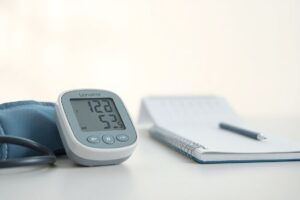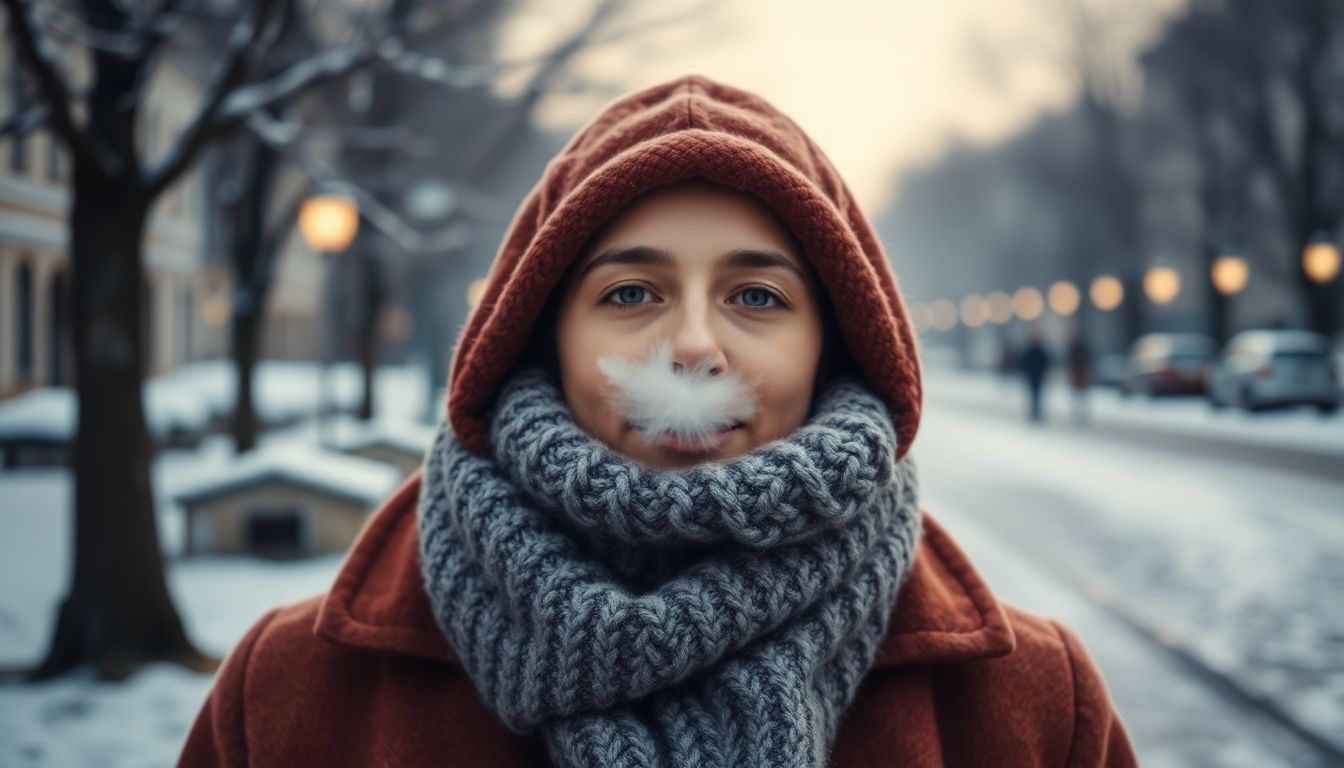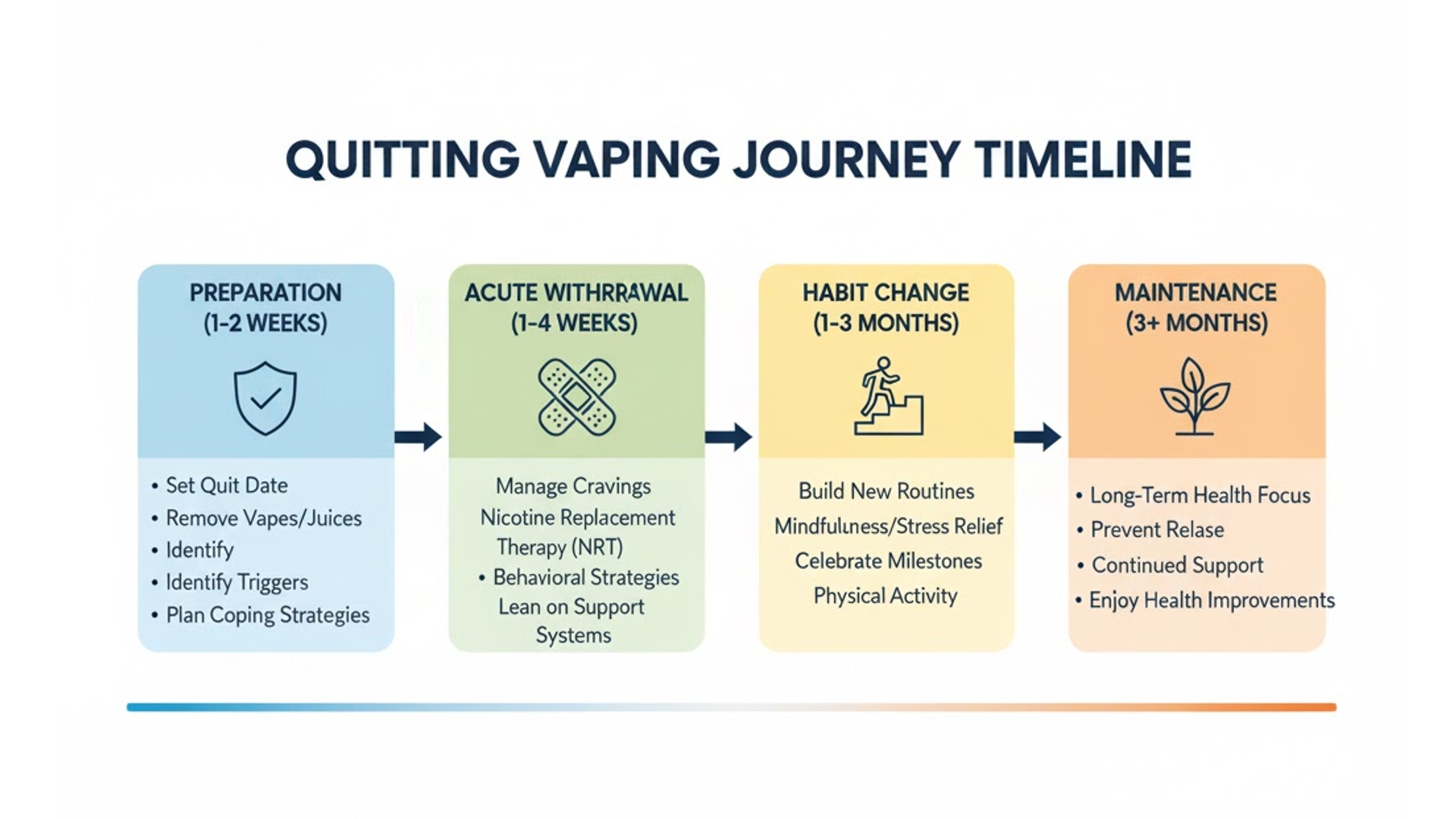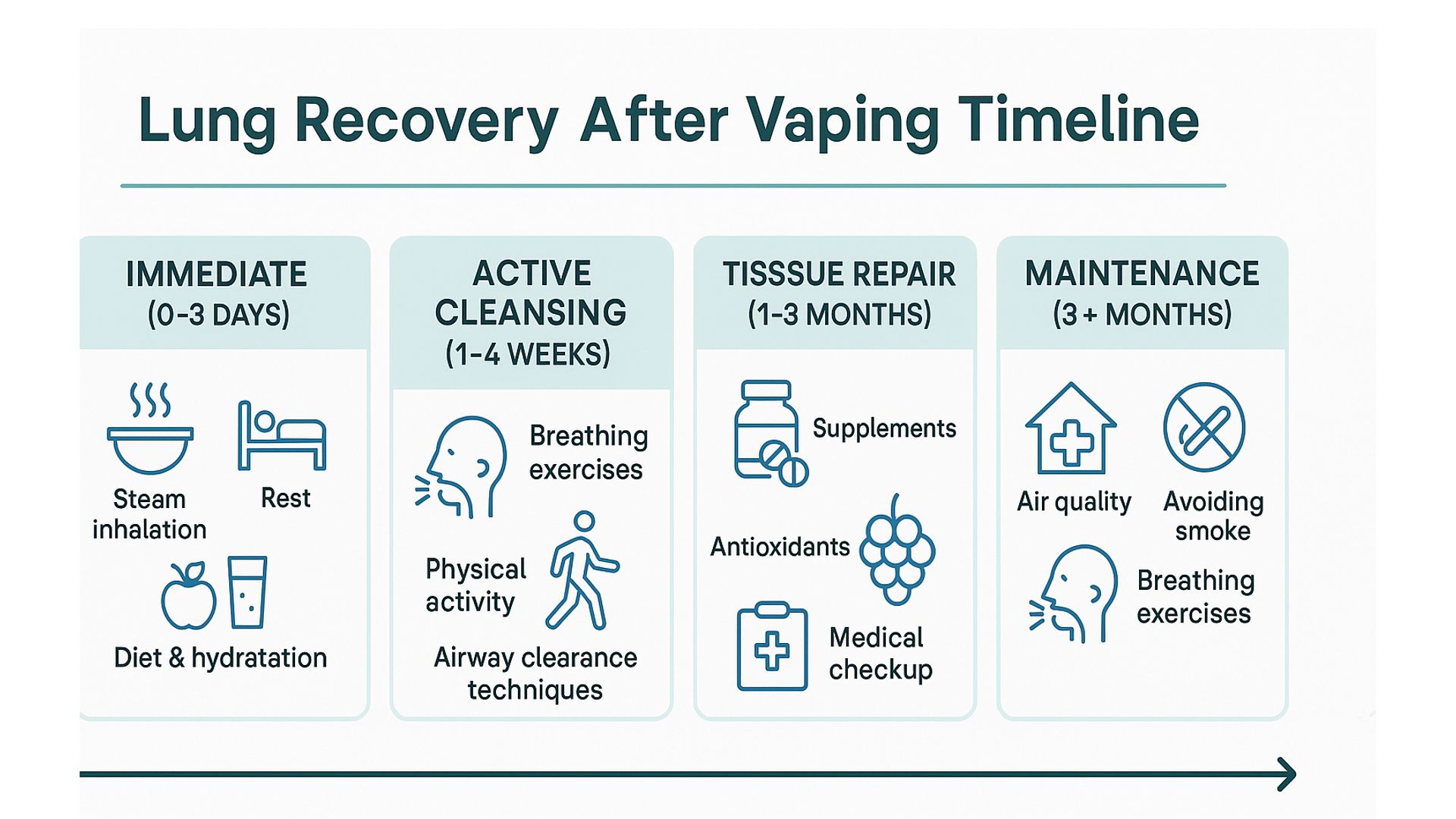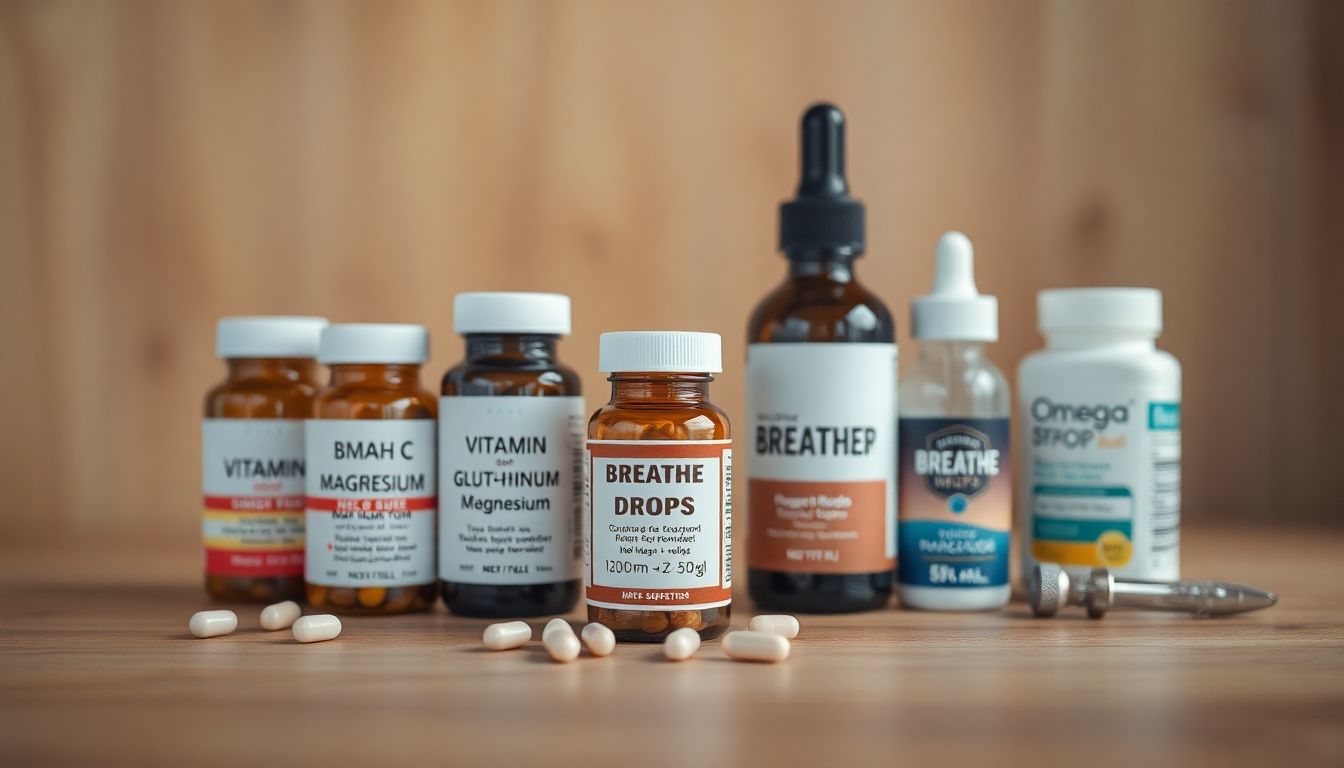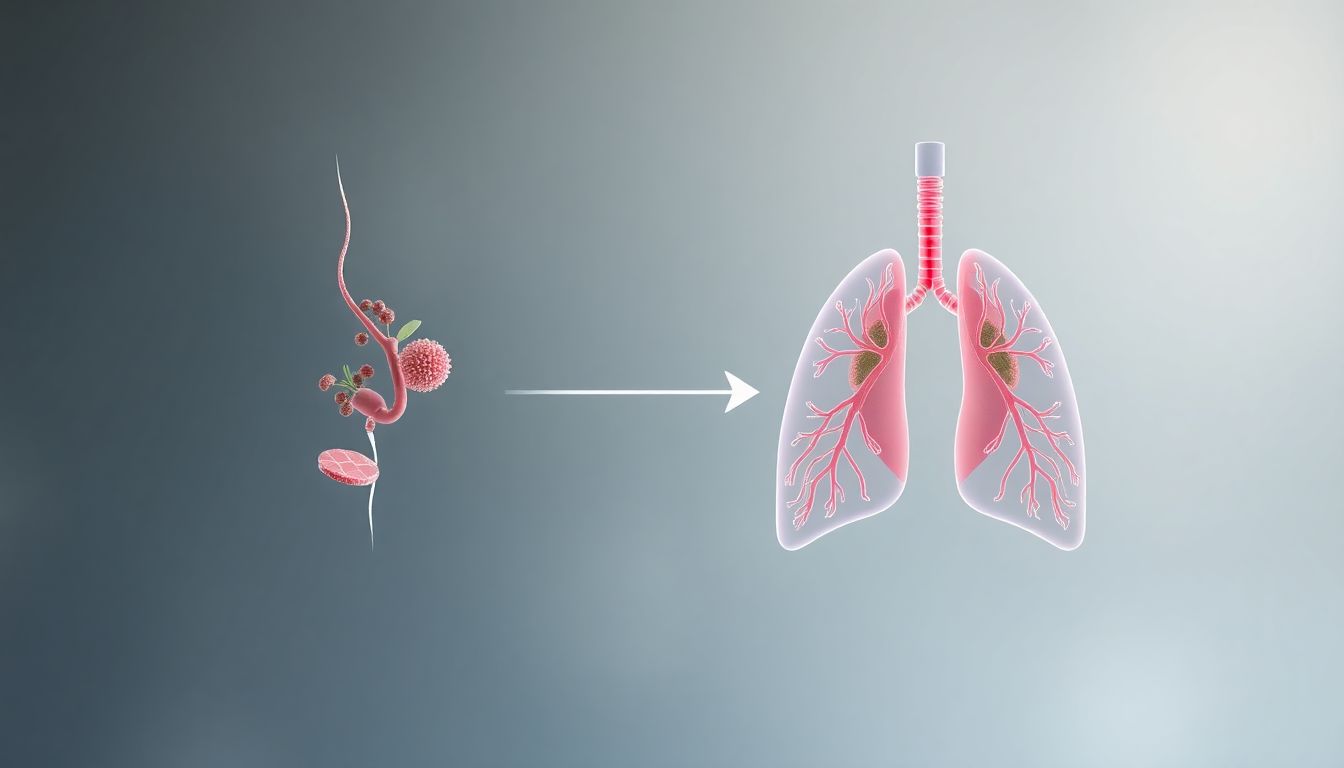That first deep breath of frigid winter air can feel like a shock to your system—a sudden tightness in your chest, a prickling in your airways, and an immediate urge to cough. If you feel like the cold weather is literally taking your breath away, you’re not imagining it.
For millions with asthma, COPD, or even just sensitive airways, winter transforms the simple act of breathing into a daily challenge. But why does this happen, and more importantly, what can you do about it? This is just one piece of the puzzle when it comes to overall respiratory wellness, which we cover comprehensively in our Ultimate Guide to Clearing Mucus & Restoring Lung Health Naturally.
This guide will walk you through seven practical, science-backed strategies for winter lung protection, so you can breathe freely, stay active, and enjoy the season without fear.
Why Cold Air is a Shock to Your Lungs
Your lungs are designed to warm and humidify the air you breathe. When you inhale cold, dry air, your airways have to work overtime. This can cause two main problems:
- Airway Drying: Cold air holds very little moisture. As your body works to humidify it, the lining of your airways can become dehydrated, irritated, and inflamed.
- Bronchospasm: The sensitive muscles around your airways can constrict in response to the cold, a condition called cold-induced bronchoconstriction. This narrows your breathing tubes, leading to shortness of breath, wheezing, and that familiar tight feeling in your chest.
This is often the hidden cause behind the symptoms we explore in wheezing after walking or exercising in the cold.
7 Strategies for Winter Lung Protection
1. Master the “Scarf Breathing” Technique
This is your first and most powerful line of defense.
- How to do it: Drape a scarf loosely over your nose and mouth before you head outside. Breathe normally through the fabric.
- Why it works: The scarf traps the warm, moist air from your exhale. When you inhale, you pull in this pre-warmed, pre-humidified air, significantly reducing the shock to your airways. It’s a personal, portable air warmer.
2. Breathe Through Your Nose (Not Your Mouth)
Your nose is a built-in, high-efficiency air conditioner and humidifier.
- How to do it: Be mindful of your breathing, especially during exertion. If you feel yourself panting through your mouth, slow down and focus on inhaling and exhaling through your nose.
- Why it works: The intricate nasal passages have a large surface area filled with blood vessels that efficiently warm and moisten the air before it reaches your lungs. This is a foundational practice emphasized in diaphragmatic breathing for optimal lung function.
3. Warm Up Indoors Before Heading Out
Don’t start your winter run or walk with cold lungs.
- How to do it: Spend 10-15 minutes doing light cardio and dynamic stretches inside. This gently raises your core body temperature and prepares your respiratory muscles for work.
- Why it works: A warm-up ensures your lungs and airways aren’t starting from a “cold idle,” making them less reactive to the sudden change in temperature.
4. Hydrate Strategically for Your Airways
Hydration isn’t just about drinking water; it’s about keeping your airways moist.
- How to do it: Drink plenty of warm fluids throughout the day, like herbal tea or warm water with lemon. Consider using a humidifier in your bedroom at night to combat dry indoor air.
- Why it works: Proper systemic hydration helps your body produce the mucus that lines and protects your airways. A humidifier adds necessary moisture to the air you breathe for hours at a time.
5. Time Your Outdoor Activities Wisely
Be smart about when you expose your lungs to the cold.
- How to do it: Exercise during the warmest part of the day, typically midday or early afternoon. Avoid early mornings and late evenings when temperatures are lowest. On bitterly cold or windy days, take your workout indoors.
- Why it works: Minimizing exposure to the most extreme conditions gives your lungs a break and prevents unnecessary irritation.
6. Create a “Pre-Vent” Medication Plan (If Prescribed)
If you use a rescue inhaler, a proactive approach can make all the difference.
- How to do it: Talk to your doctor about using your short-acting bronchodilator (like albuterol) 15-20 minutes before you head out into the cold.
- Why it works: This pre-treats your airways, helping to prevent the bronchospasm before it even starts. It’s a strategic use of medication for proactive COPD or asthma management.
7. Layer a Neck Gaiter for High-Intensity Activities
For running, skiing, or shoveling snow, a scarf can be too loose.
- How to do it: Use a fitted, breathable neck gaiter or balaclava. You can pull it up over your nose and mouth, and it will stay in place during movement.
- Why it works: It provides all the benefits of “scarf breathing” with the security and lack of bulk needed for physical activity, ensuring consistent warm-air breathing.
Your Action Plan for a Breath-Friendly Winter
Don’t let the cold air dictate your life. By incorporating these seven strategies, you can take control of your winter lung health.
- Every time you go out: Remember your scarf or gaiter.
- Before activity: Warm up inside and consider your pre-vent medication.
- All day long: Breathe through your nose and stay hydrated.
Your lungs are resilient. With the right protection, you can support them through the winter months and continue to breathe deeply and freely. For a complete roadmap to optimal respiratory health in any season, explore our foundational resource: The Ultimate Guide to Clearing Mucus & Restoring Lung Health Naturally.
FAQs
1. Why does cold air make me cough and wheeze?
Cold, dry air irritates the lining of your airways (bronchi), causing them to become inflamed and narrow. The muscles around them can also tighten (bronchospasm), leading to coughing, wheezing, and a feeling of tightness in the chest as your body struggles to move air through the constricted passages.
2. Is it bad to exercise in cold weather?
It’s not inherently bad, but it requires preparation. For people with sensitive airways, exercising in the cold can trigger symptoms. By following strategies like scarf breathing, warming up indoors, and timing your workouts wisely, you can safely enjoy winter exercise.
3. How can I protect my lungs from cold air without a scarf?
A neck gaiter or a specialized face mask designed for athletes (like those used for skiing) are excellent alternatives. If you have nothing, focus intensely on breathing slowly and deeply through your nose, as it is your body’s natural air warmer and humidifier.
4. Can healthy people get breathing problems from cold air?
Yes. Even people without a diagnosed lung condition can experience temporary irritation and coughing from a sudden, deep breath of very cold air. However, those with underlying conditions like asthma are far more sensitive and will experience more severe and persistent symptoms.
5. What is the best humidifier for dry winter air in the bedroom?
Look for a cool-mist humidifier (ultrasonic or evaporative) with a large tank to last through the night. It should be easy to clean to prevent mold and bacteria growth. For specific model recommendations, see our detailed guide to the best humidifiers for respiratory conditions.
6. Does drinking warm fluids actually help my lungs?
Yes. Drinking warm fluids like tea or broth helps in two ways: it contributes to your overall hydration (which is needed to produce protective airway mucus), and the warm vapor you inhale from the cup can provide immediate, soothing moisture to your nose and throat.
7. Why is breathing through my nose better in the cold?
Your nose has complex structures and a rich blood supply that warms and humidifies incoming air much more effectively than your mouth. Breathing through your nose delivers air to your lungs that is closer to body temperature and 100% humidified, preventing the shock and irritation caused by cold, dry air.
8. I have COPD. What’s the most important winter tip for me?
The “Scarf Breathing” technique is arguably the most critical. Combined with using your rescue inhaler 15-30 minutes before going outside (as directed by your doctor), it can dramatically reduce the risk of debilitating bronchospasm. Always discuss a winter action plan with your physician.
9. Can a hot shower help with cold-air-induced breathing problems?
Yes. The warm, steamy air from a hot shower can act as a natural humidifier, helping to relax and moisten your irritated airways, providing temporary relief from coughing and tightness. It’s similar to the principle behind steam inhalation for mucus relief.
10. At what temperature should I start being careful?
There’s no single number, as wind chill and personal sensitivity play a huge role. However, many people begin to notice symptoms when temperatures drop below 40°F (4°C), and the risk increases significantly below freezing (32°F or 0°C). Pay attention to your body’s signals rather than a specific temperature.



